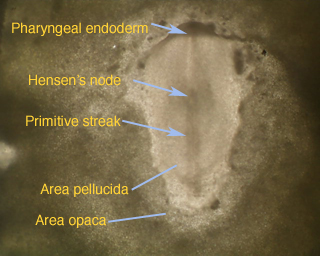

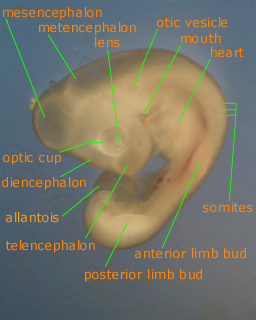
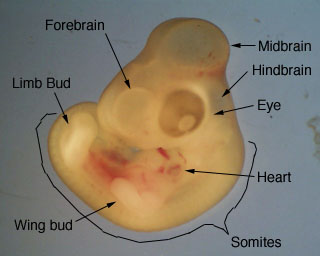
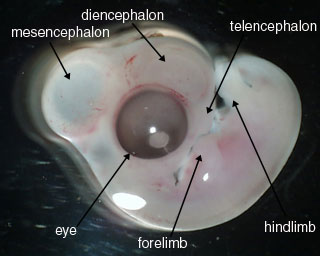
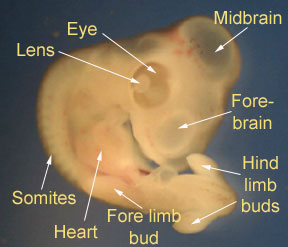
Early Development of the Chick Embryo
The Chicken is
the classical animal model of study in Developmental Biology. Below are a series
of images of chick embryos of different ages. Please note the differences in
features and structures as the embryo progresses through the Hamburger and Hamilton
stages of development.
 |
In stage 5, the Primitive streak has reached its full length and the primitive groove and Henson's node are visible. |
 |
In stage 11 the heart is bent to the right and the Optic vescicles are visible and constricted at their base. |
 |
In stage 20, the Hind limb bud is longer than the fore limb bud. There are somintes present all the way down the back except for the most distal part of the tail. The eye has some gray pigmentation. The allantois is present and about the same size as the midbrain. |
 |
In stage 25 the limb and wing buds are distinctly longer than they are wide and the elbow and knee joints are visible. Eye pigmentation is very distinct. Midbrain is more distinct than in stage 20. Somites extend to the tip of the tail. |
 |
A later stage 25 has an even more distinct eye than the previous photograph. |
 |
In stage 26, limbs are considerably lengthened. Embryo is maximally curved. |
Staging took place according to V. Hamburger and H.L. Hamilton, Normal Stages of the Chick